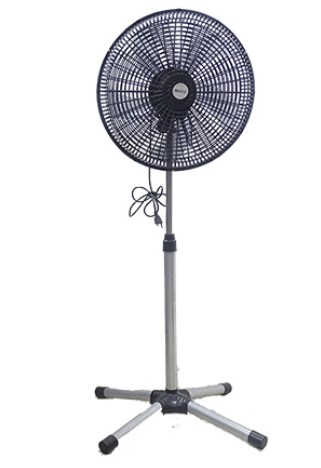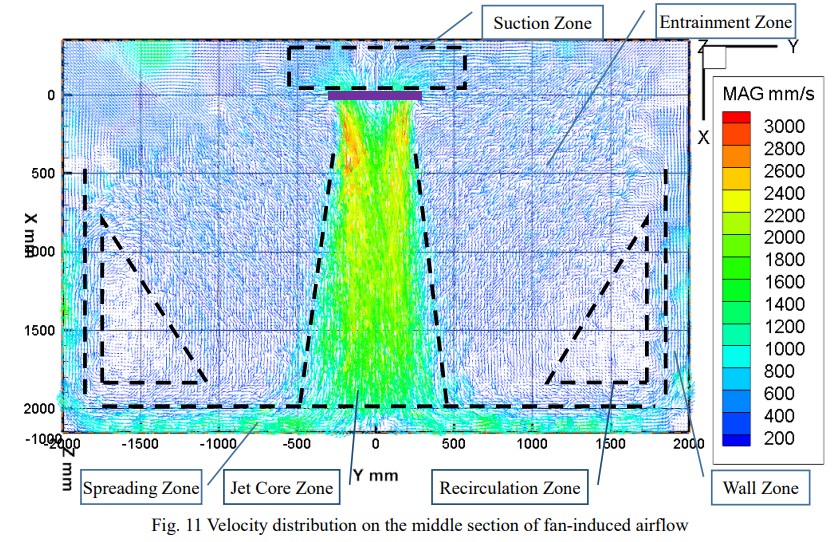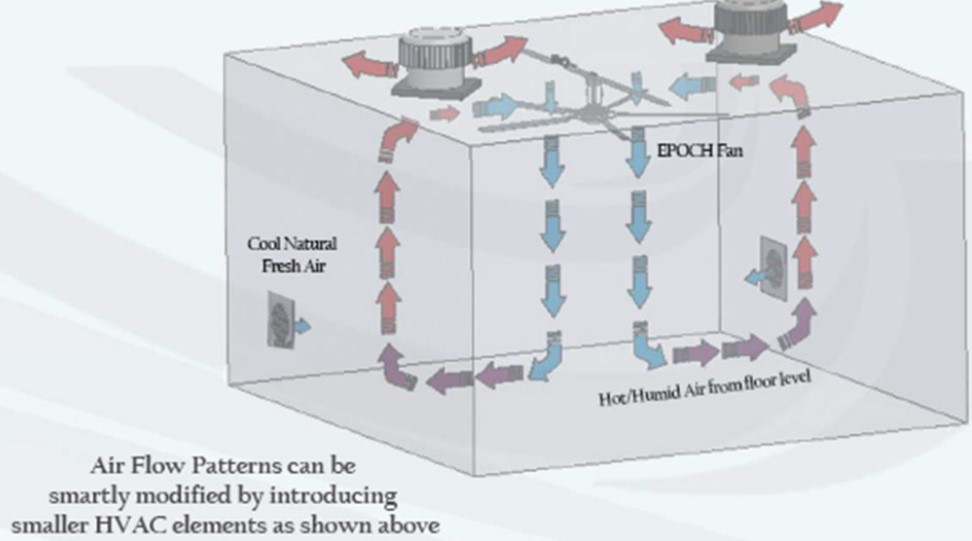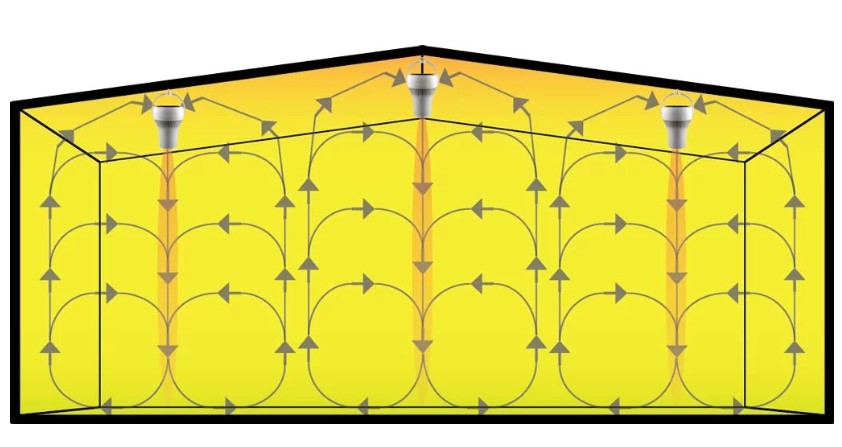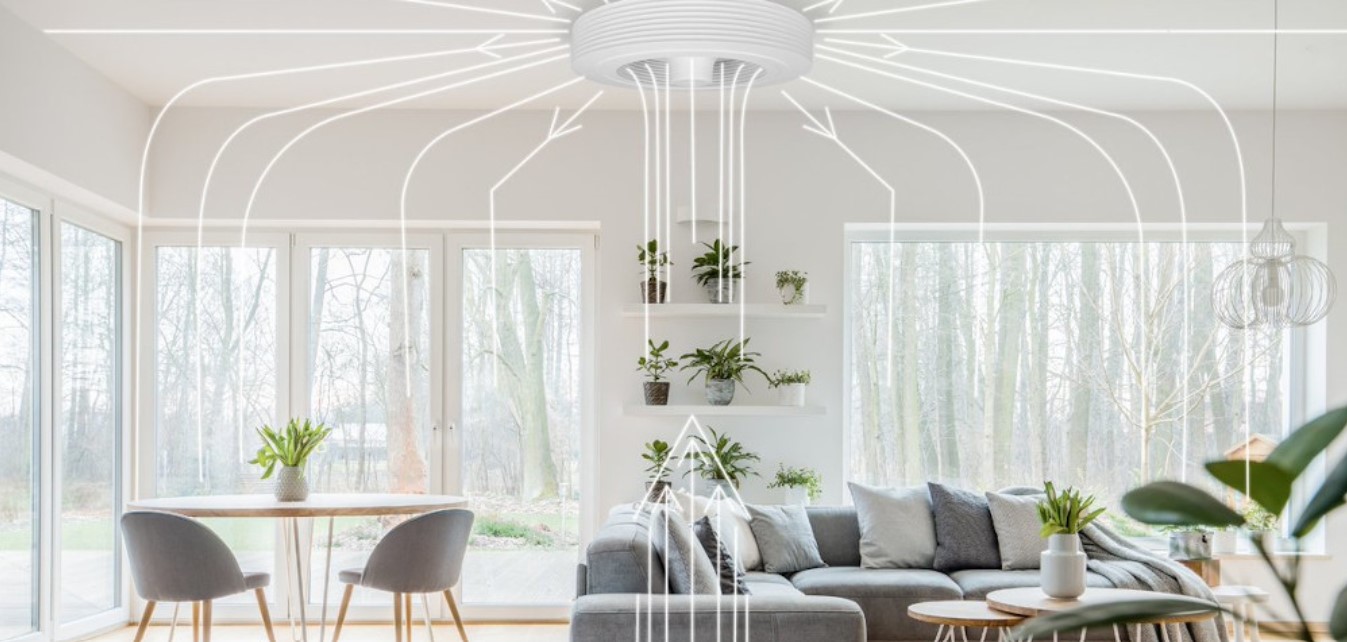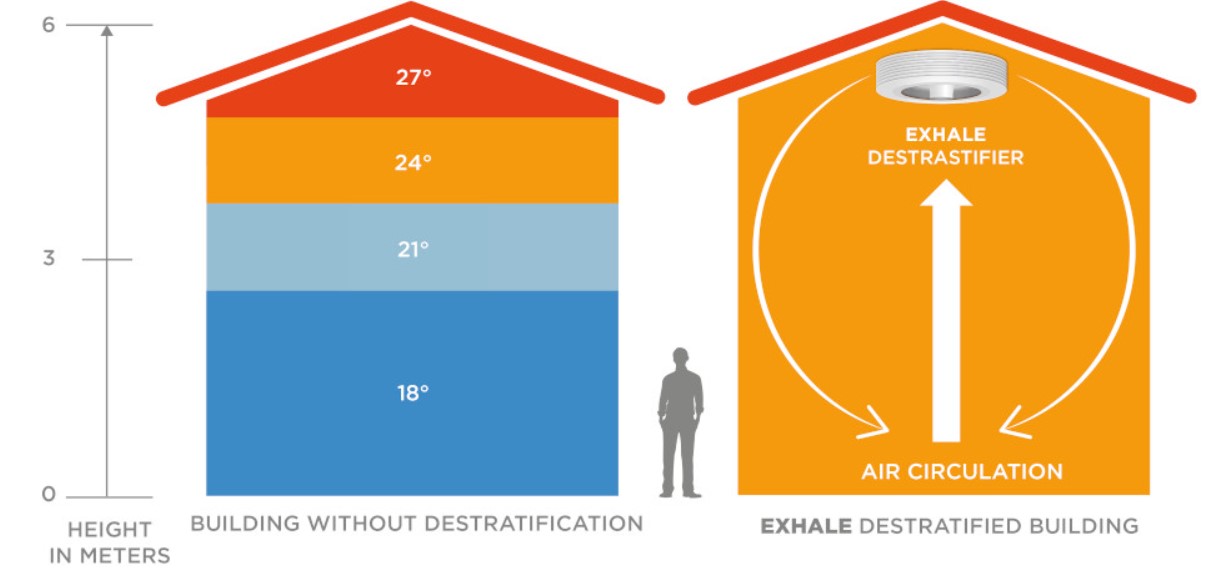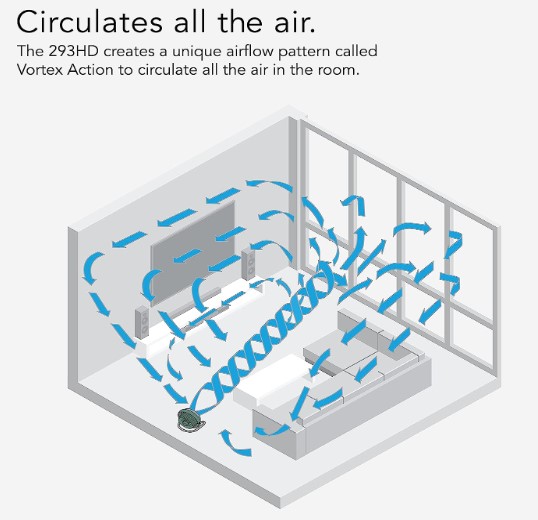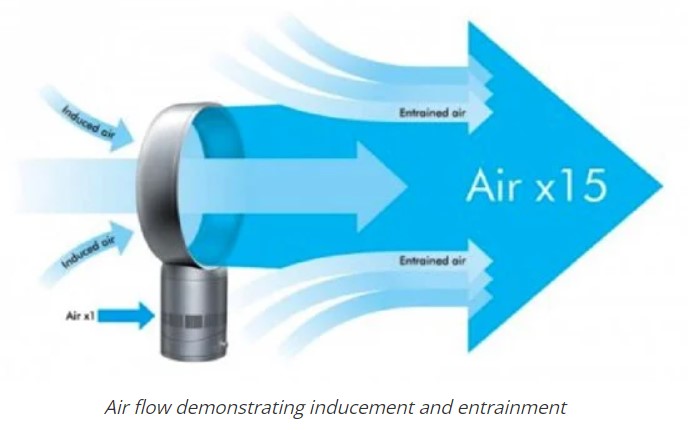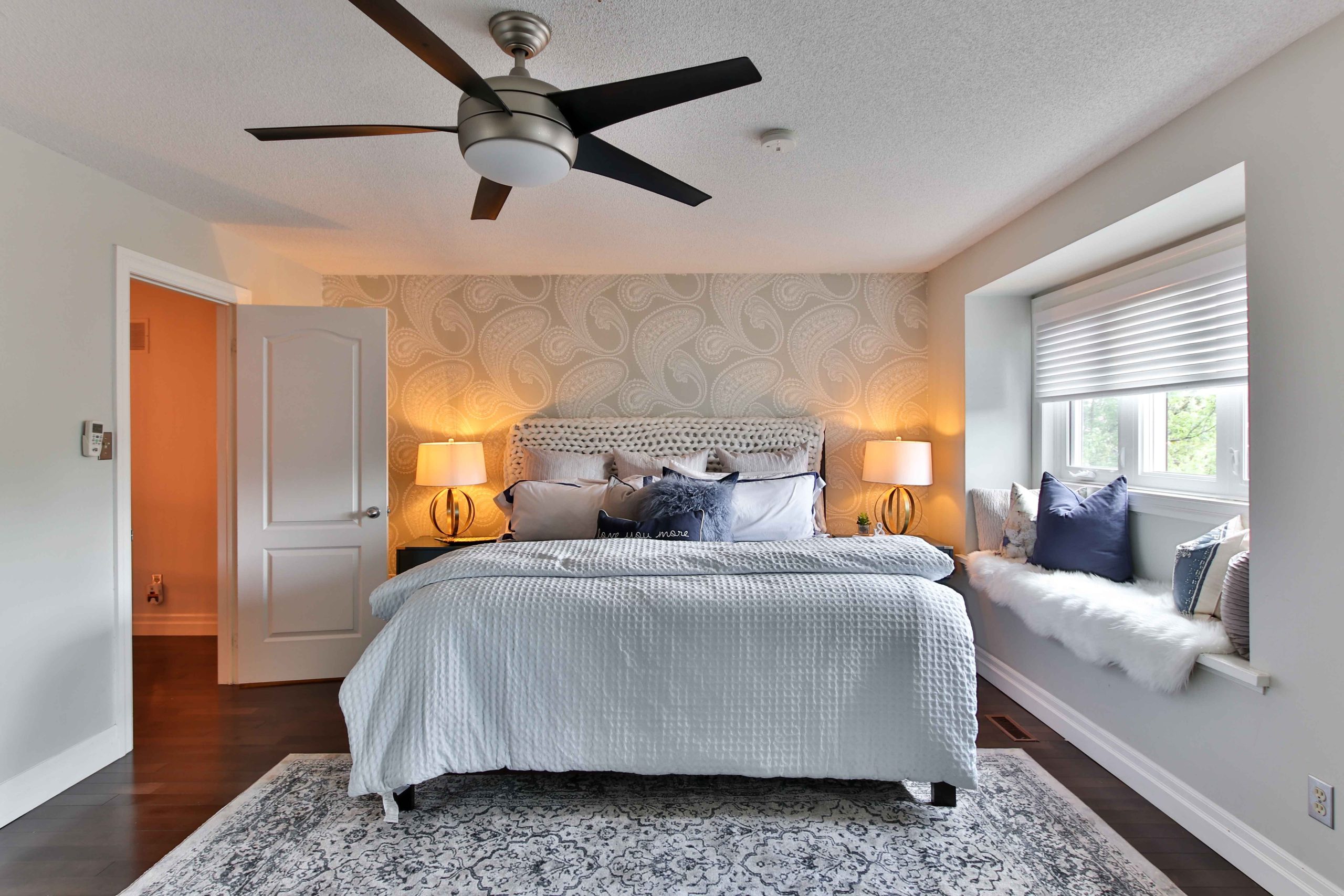You can’t have too much air circulation!
You can’t have too much air circulation!
When clients ask advice on choosing air purifiers, some of the first questions we ask are about the layout of their home and how air circulation is accomplished. This topic is covered in our article “Which air purifier should I choose for my home? Part 1: Airflow”. Airflow is super-important, and if outdoor conditions like heat, cold, humidity or pollution restrict your ability to open windows for good cross-ventilation, fans are necessary to get air moving. Moving air helps any kind of air purifier and also your home’s heating and cooling systems to work more efficiently. We’ve put together a few visuals on how common (and not so common) fans work.
What about Radiator Fans?
Radiators with fans are common installations in older buildings and to be sure, they are better than not having a fan at all. However as shown in the below diagrams, there tends to be an area in the middle of the room that doesn’t get much mixing action.
Source: Study “Influence of Sensor Position in Building Thermal Control: Development and Validation of and Adapted Zone Model”
“Basket Fans”
Although you may not have heard of this description before, when seeing a basket fan you can easily understand why it’s called that:
Whether sitting on a desk, standing on a floor or hung from the ceiling, these types are generally economical and when placed near where you are sitting, seem to be efficient in moving air. However, scientific study about their circulation effects show otherwise. There can be large “void spaces” where virtually no air is moving.
Source: Read this before investing in basket fans for air circulation
Regular Ceiling Fans
Ceiling fans are great tools for getting more air circulation. Traditional ceiling fans tend to create better air circulation in a room than regular floor-or tabletop- fans (excluding “air circulators”, which we will visit separately in this article). The image below shows that the fan shoots air with greatest velocity down near its center, and airflow moves along floors until it reaches walls and moves upwards again. There are entrainment zones around the fan that do not get optimal mixing, however, if the fan is sized correctly for the room (check our article on choosing a ceiling fan), it’s definitely an improvement over not having a fan at all.
Image: Study: Measurement of airflow pattern induced by ceiling fan with quad-view colour sequence particle streak velocimetry
HVLS Fans
Some big rooms can be serviced by one or more High Volume Low Speed (HVLS) fans, which turn more slowly but generate much bigger cubic foot per minute (cfm) airflows in a space (read more about HVLS fans here). Because the airflow along the floor is much deeper with HVLS fans than with normal ceiling fans, these currents on the floor are called floor jets. The image below also shows how such a fan can cool even more effectively when fresh air vents at the bottom of the room, and exhaust vents at the top, are opened.
Source: “Need for Ventilation”
Air Circulators/Destratification Fans
“Destratification” is the gold standard of air circulation in a room, because temperatures in the top, bottom and sides of the room can show that the air is being thoroughly mixed! Without destratification, thermal “layers” can develop, and air conditioning (including heating) as well as purifiers cannot effectively service the entire volume of air. There are several different types of fans that can break up these thermal layers. Airius, an Australian company, makes a different type of high volume fan that is termed “bladeless” because the blades are hidden in the body of the fan but still generate significant airflow. Their systems are termed “airflow circulation cooling fan and destratification system” and are designed to be mounted close to the ceiling; many applications are found in convention centers, dealerships and indoor stadiums.
Source: Airius Fans Vs. HVLS Fans
Real “bladeless” fans
For residential or commercial use, true “bladeless” ceiling fans (modeled after Nicola Tesla’s bladeless turbine) offer similar destratification to circulator fans, with less noise. According to Exhale Fans’ fact page, “The airflow is a vortex: The airflow profile makes the real difference in how you feel while in your space. Air exits the Exhale Fan in all directions 360° horizontally and at a 45° angle. This unique airflow starts a gentle rotation of the air much like a vortex. The vortex airflow profile generated by the Exhale Fan is unmatched in the ceiling fan industry. Air is not simply directed straight down but moves around the room in a pleasant cyclonic flow. What we have created is a destratified environment where floor to ceiling, wall to wall, you have a temperature balanced and comfortable space.” The video of an Exhale Fan working in water to lift and circulate particles off the floor of the water tank is impressive!
Source: Air Destratification
Source: How does it work?
An “air circulator” like the Vornado ($92) is purported to have a similar pattern to ceiling and HVLS fans, however it shoots air across a room. Here is a video comparing Vornado, Dyson and generic tabletop fan. The reviewer (Filipino) and commenters mostly prefer the Vornado for power and value. Another great air circulator option is the Dreo ($99); this video comparing Vornado and Dreo declares Dreo the winner, although it's virtually the same price as the Vornado. The Dreo uses a brushless DC motor so it has more range of speeds, and uses less power than the Vornado, which uses an AC induction motor. Dreo is also quieter across the range, even at the highest setting. There are more economical versions of each brand that incorporate less technology but move the same amount of air.
Source: Vornado 293HD literature
Although the Dyson bladeless fans claim to be “air multipliers” because more air is entrained than is taken in through the pedestal of the fan, they lack the power to destratify and circulate air in a whole room.
Source: How does the Dyson Air Multiplier Work?
Now that you know which types of fans help to truly get all of the air in the room moving, you can decide how and where to use/place them. Perhaps you’ve never turned on your ceiling fans…now is the time to clean them and get them running! Considering that the purpose of an air purifier with HEPA is to filter all the air within a room, the fan used in the purifier or a separate fan paired with it is very important to the purification function. It should either have a high Clean Air Delivery Rate (CADR), or be used with a separate fan that is able to destratify the room.
In this test, a 705 cubic foot space (approximately 9x10 foot room with 8 foot ceiling) was filled with incense smoke and different purifiers were operated to clear all traces of PM1.0ug/m3, PM2.5ug/m3 and PM10.0 ug/m3 particulate matter. Although the location of the particulate measurement devices were not disclosed (how close to the purifier they were), the purifier with the highest CADR proved to be the fastest to clear the air (BlueAir Pure Fan Auto, in only 27 minutes); the other two purifiers tested took 1 hour 24 minutes and 2 hours 11 minutes! However, it’s possible to pair a purifier with lower CADR with a ceiling fan or circulator or destratifier fan to improve performance..
In conclusion, the best way to purify air with a HEPA filter is to use a purifier with a high CADR, or to use the purifier in conjunction with a fan that improves whole-room circulation (and thus destratification). In addition, we’ve always stated that the Germ Defender/Mold Guard and Air Angel units work differently from HEPA, because they send out ions into the room instead of pulling all the air through the device to filter it. However, their function also improves when coupled with an air circulator, in order to deliver the ions more widely and evenly throughout the space.
Photo by Sidekix Media on Unsplash


